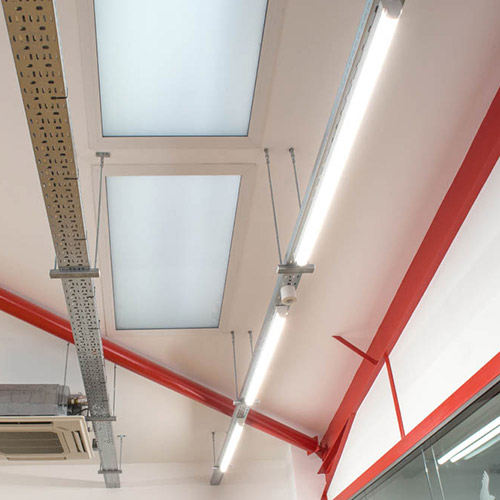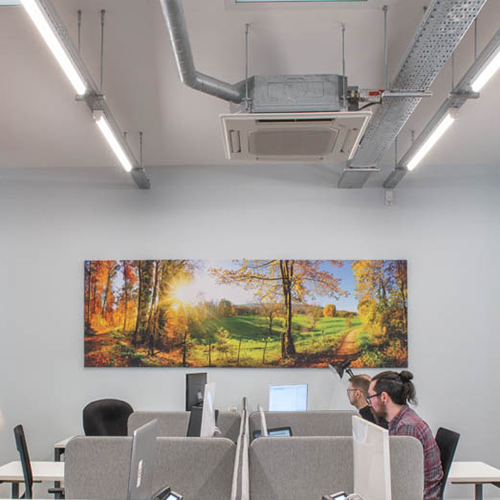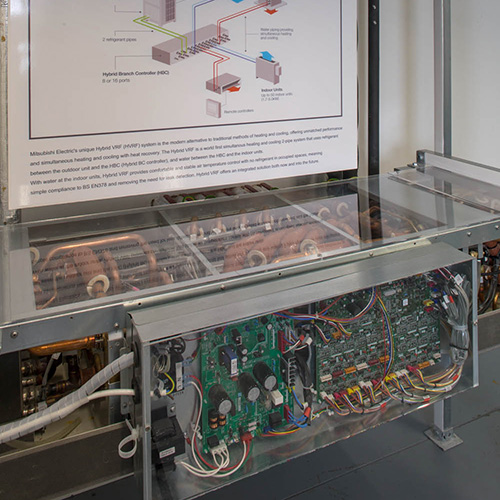Energy
Improving the energy efficiency of the systems
Optimising Energy Inputs
All of the systems are designed to be very energy-efficient so we will also look at optimising the energy inputs. It is estimated that the building’s energy usage is now about 25% of what it originally was. Four buildings like The Well could be run for what it used to take to run this building alone.


Low Energy Light Control System
The other key energy input to the building was lighting. Using LED lights controlled by a KNX based system integrated into the BMS in combination with natural daylighting, we achieved a very low energy light control system. All circuits are fitted with lux and presence sensors. When a person walks into a room, the lights come on at the level required to make up for the light that is deficient from the natural daylight. There are no light switches fitted in the building, eliminating the need for people to remember to switch off the lights when they leave the room.
Heat Recovery Ventilation system (HRV)
In order to ensure the level of energy efficiency we desired, while ensuring that the indoor environment would meet the highest standards for offices, we deployed a full Heat Recovery Ventilation system (HRV). By carefully studying air and heat profiles, we were able to ensure that high heat gain areas such as IT equipment rooms, meeting rooms and toilets were well ventilated and the surplus heat was redistributed to areas with higher losses, while ensuring that CO2 levels would be kept low at all times.


Hybrid Variable Refrigeration Flow (HVRF)
In tandem with he HRV, we deployed a Hybrid Variable Refrigeration Flow (HVRF) air source heat pump system. The key features of the HVRF system is that it circulates water to central heat exchange units where excess heat or cooling is transferred to circuits needing energy inputs, whereby excess heat from IT and meeting rooms can be used to heat less populated areas. In cooling mode, the reverse happens. One of the other key benefits of HVRF over conventional AC systems is the lower refrigerant charge. The HVRF system has approximately 25% of the refrigerant charge that a conventional VRF system has for the same system load, thus reducing the environmental impact of providing full air-conditioning.
Want to hear more
Contact Us
Fill in your details below and we'll be in touch
Fields marked with an * are required.
Fields marked with an * are required.
